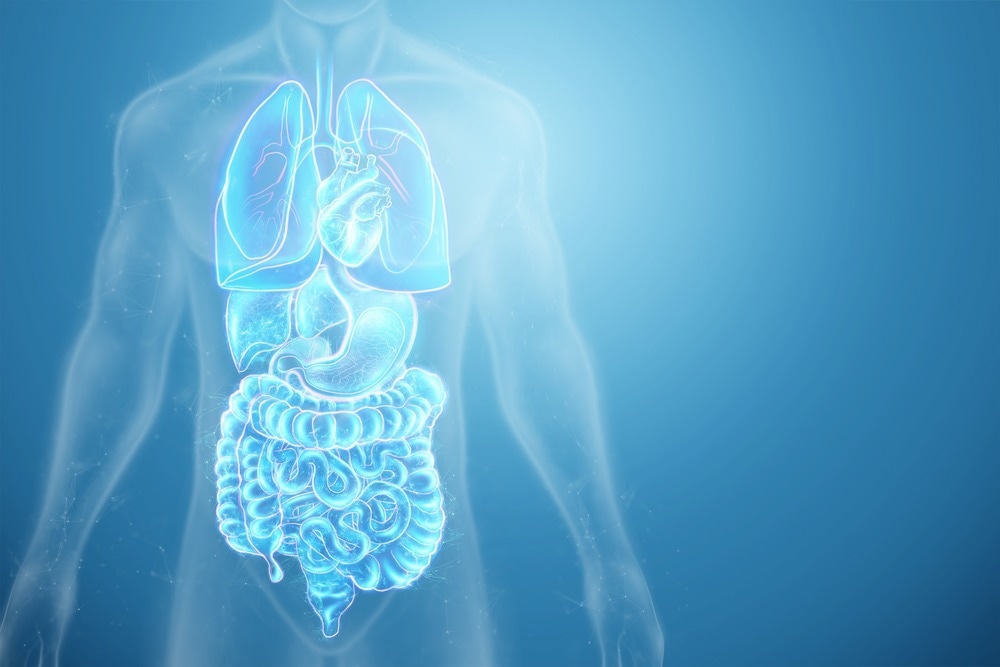In a recent study published in Nature, researchers performed a proteomic analysis to identify serologic indicators of organ aging and disease.
 Study: Organ aging signatures in the plasma proteome track health and disease. Image Credit: Marko Aliaksandr/Shutterstock.com
Study: Organ aging signatures in the plasma proteome track health and disease. Image Credit: Marko Aliaksandr/Shutterstock.com
Background
Animal studies show that aging differs between individuals and organs; however, its influence on age-related disorders in humans is uncertain. Aging increases the risk of chronic diseases and has the potential to transform patient care, preventative medicine, and medication development. Accurate aging measures are critical to converting these findings into transformational therapies.
Current techniques employ clinical chemical indicators with poor organ specificity, whereas brain aging assessments use magnetic resonance imaging (MRI)-based brain volume and functional connectivity studies.
About the study
In the present study, researchers developed a straightforward and interpretable approach for studying organ aging and predicting diseases and aging consequences using plasma proteomics data.
The team developed a novel approach for assessing and tracking human aging by quantifying organ-specific protein molecules in plasma. They measured organ-specific aging variations in individuals using levels of human blood plasma proteins from specific organs. The team utilized machine learning algorithms to examine aging in 11 main organs and assessed organ age in five cohorts with 5,676 individuals.
The researchers analyzed 4,979 proteins and charted the hypothesized organ-specific proteins in plasma, which they then utilized to train organ aging models. Using the Human Protein Atlas criteria, genes were classified as 'organ enriched' in case of ≥4.0-fold higher expression in an organ in comparison to other organs. Quality control assessments were performed to exclude proteins with high variation coefficients or weak correlations between the SomaScan test versions used for the cohorts.
Aging models produce an 'age gap' for all individuals, which indicates individual biological age compared to similarly-aged peers according to their molecular profiles. The researchers trained lowest absolute shrinkage and selection operator (LASSO) models for main organs (n=11) using organ-enriched protein molecular inputs. The study was limited to arteries, fat, heart, brain, immune tissues, intestines, kidneys, liver, lungs, muscles, and pancreas due to their established contributions to aging disorders and accessibility to age-related phenotypic information in the cohorts.
The researchers investigated the relationship between organ age and biological aging, looking at the relationship between organ e-ageotypes and nine age-related illness states. They also determined the relationship between organ age differences and all-cause mortality. The feature importance for biological aging (FIBA) method was used to understand the relationship and obtain per-protein significance scores for chronological and biological age. The researchers used FIBA to investigate the time sequence of cognitive decline and the biological mechanisms involved in all aging models using the Knight AD Research Center group.
Results
The findings indicated that 20% of the population has significantly accelerated aging in one organ, and 1.7% have multi-organ aging. Accelerated organ aging increases mortality risk by 20% to 50%, and organ-specific illnesses are associated with quicker aging of particular organs. Accelerated heart aging increases the risk of heart failure by 250%, and accelerated brain and vascular aging predicts Alzheimer's disease (AD) development independently and as strongly as plasma pTau-181, the current best blood-based biomarker for AD.
With 893 (18%) proteins fulfilling the "organ-enriched" criterion, with the highest number from the brain, plasma proteins potentially mimic organ aging. Following quality control, 4,778 proteins (856 organs enriched, 18%) were used for downstream analysis. After several test adjustments, all 11 organ-specific aging models accurately predicted age for all cohorts. The proteins selected for the study were significantly enriched for activities related to specific organs.
The researchers found that individuals with similar age differences had different organ aging patterns, resulting in low-moderate associations between organ-specific age differences at the population level. While organ-specific aging was associated, except for the organismal and conventional age gaps, the bulk of the variance in an organ-related age gap was unexplained by others. Furthermore, the team found that certain individuals experienced excessive aging in a few organs compared to the overall population.
Organ e-ageotypes are associated with various disease states, and organ age can predict health and illness. Kidney ageotypes are linked to metabolic disorders; heart ageotypes to cardiac diseases; muscle ageotypes to gait impairment; brain ageotypes to cerebrovascular disease; and organismal ageotypes to AD.
The researchers noticed a consistent pattern of decreases in AD brain tissue and an increase in blood with age and AD, implying that the increase in synapse and neurite growth-related protein levels in the blood could be due to a loss or alteration in protein processing and subsequent shedding of these factors in the brain. CognitionOrganismal and CognitionArtery proteins altered earlier and more swiftly with age than CognitionBrain and CognitionPancreas proteins.
Conclusion
Overall, the study findings highlighted a framework for modeling organ health and biological aging using plasma proteomics, which can predict mortality, disease risk, and tissue aging heterogeneity. This minimally invasive approach can help understand the effects of health interventions at the organ level. The study provides a comprehensive resource of organ aging information for nearly 6,000 individuals across the adult lifespan and various age-associated disease states.